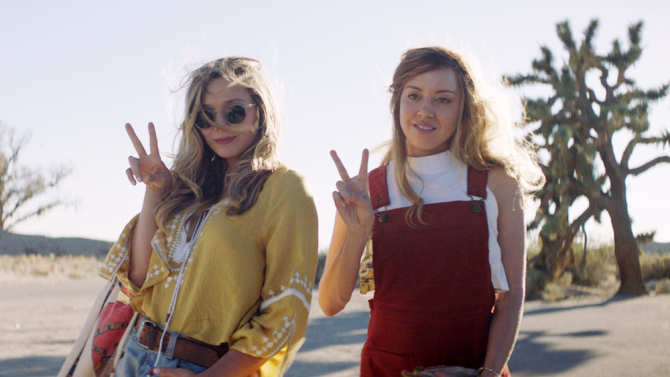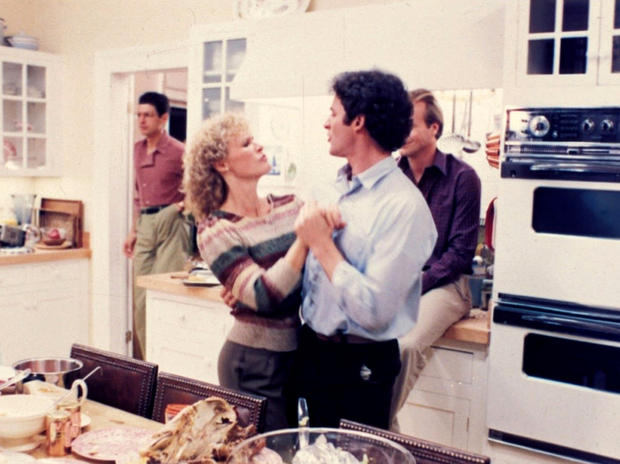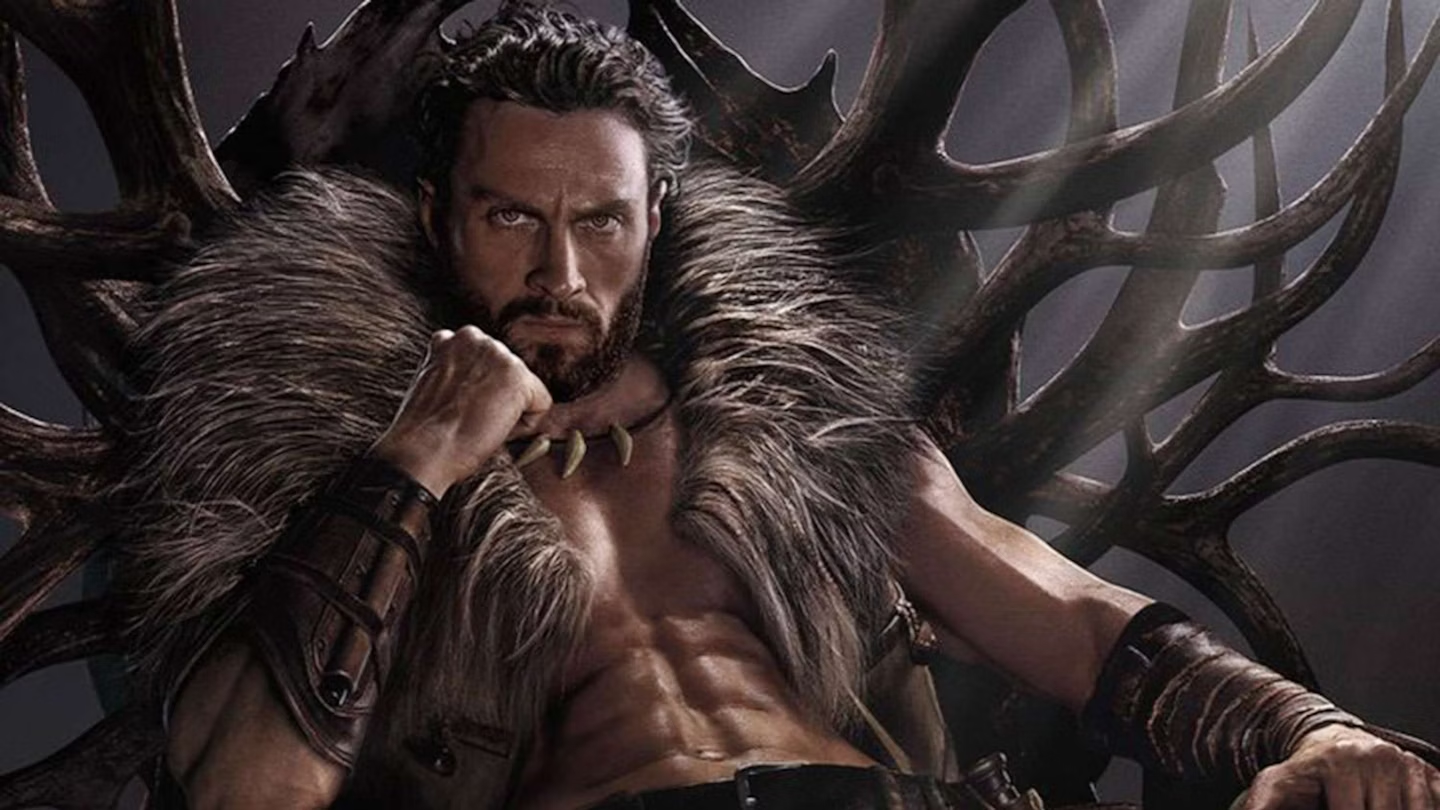
As a youth, I loved seeing movies where the whole point was that grown-ups really don’t have anything figured out, that everyone’s just bumbling through adulthood, taking blind stabs in the dark and hoping they somehow add up to good decisions. The Big Chill is one of my favorites in that category – you’ve got all these well-sweatered adults, seemingly keeping it together with varying degrees of success in their personal and professional lives.
But the minute they’re reunited, everyone safely under the same roof again and kitchen dancing to Motown classics, the masks drop, and it becomes clear that, in one way or another, they’ve all been faking it. Faking their happiness with their families, faking their confidence in their career choices, faking their contentment with how their lives turned out so differently than they had imagined 15 years ago. What I remember so clearly – watching it as a kid who had the whole minefield of growing up still stretched out before her – is that the film doesn’t judge them for their attempts to trick the outside world (and sometimes themselves) that everything’s going better than it really is. Instead, in The Big Chill, we get an acknowledgement that most of the characters are doing what they have to in order to get by. Now, in the thick of adulthood, its complications and let-downs, I can confirm that for most of us, some faking it is necessary, even if its just so we can face the next day of bumbling through it all over again.
There’s a moment late in Matt Spicer’s new film, Ingrid Goes West, that reminded me of that hard truth. In it, a character who’s worked so incredibly hard at presenting her life as perfect, to her circle of hip acquaintances as well as to her thousands of social media followers, is confronted by the title character, Ingrid. Ingrid angrily points to the reality of this character’s situation – that the people closest to her are deeply flawed, that her relationships are built on delusions, that her life is anything but perfect. And what I loved about this moment is that it doesn’t break this character or even seem to upset her. Unlike Ingrid, she knows that creating a gulf between your private truth and your public face isn’t always a betrayal of some truer nature, but rather a survival tactic for the ups and downs of reality.
Of course, for the characters in the The Big Chill, that gulf existed before filters and hashtags came along to put a more curated, but also glaring, focus on its contradictions. Ingrid has gotten plenty of attention for skewering our social media obsession with avocado toast that is also #blessed in the digital age. There’s a frightening accuracy in the way the movies captures that Pavlovian system of desire and reward when your phone dings, and – there it is – another human validating your existence. As Ingrid, Aubrey Plaza takes the social anxiety that comes with constant updates and the dreaded FOMO and dials it up to a level of jittery paranoia that’s uncomfortable to watch. And yet, as scared as you become of what she might say or do next, you can’t look away – an opening shot of her mascara-streaked face, eyes hungrily searching as she scroll and taps, scroll and taps, speaks to anyone who’s ever looked at images of happy people doing exciting things on their phone and wondered, why are they there having fun while I’m here, crying in my car and eating handfuls of cold french fries. So all of us really.
It’s a brilliant performance that holds the film together. Plaza sometimes suffers from being typecast or underrated because she does one thing – dry, acerbic wit – incredibly well. But as in other roles I’ve seen her in, she imbues Ingrid’s emotional life with a kaleidoscope of feelings under its dark exterior. Ingrid is a broken outsider dealing with the emotional fall out from her mother’s recent death, and she pursues an Insta star she stumbles upon online (Taylor Sloane, played by Elizabeth Olsen) all the way to Los Angeles. With the money her mother leaves her, she scrambles to buy the trappings of a life that will launch her into Taylor’s orbit. But only once she lies and cheats her way there – to the status of a new neighbor and then trusted friend, does the real fun/horror show start. Watch Ingrid’s faces as she watches the “normal” people around her laugh and chit chat, and you can see the internal acrobatics she has to go through to try and mimic their interactions. Whenever the real Ingrid slips out, there’s an intensity, a hot need that doesn’t match her new LA friends’ casual coolness – and in those moments you can also see them start to question who this new person is and why she’s sitting among them.
Ingrid doesn’t understand the difference between the white lies and pretty pictures everyone else uses to tell a nice story about their lives and the complete fabrication she creates from her online stalking of Taylor. For most of the film it’s her downfall, though the ending suggests it could also provide a sort of twisted redemption. Ultimately the movie recognizes the absurdity of our current preoccupation with social media without demonizing it. The problem isn’t that our lives aren’t as amazing as we present them to be, because that’s been true long before we started posting pictures of every #OOTD and mimosa. The problem is that a million followers can never equal one household of old friends. However popular you get, you still need someone to share all the imperfection with, someone you can cry about it and laugh about it with, someone to dance through the kitchen with to Smokey Robinson, all the while knowing your adult lives will never perfect, but that this moment comes close enough.

Ingrid Goes West is playing in theaters now.
The Big Chill is available to rent on Amazon Video.

Movie
‘Mufasa: The Lion King’ Will Leave You Breathless

“Mufasa: The Lion King” is a visually stunning addition to the beloved Lion King franchise, offering a fresh and emotionally resonant take on the origins of one of Disney’s most iconic characters. The film beautifully explores Mufasa’s journey, balancing heartfelt moments with touches of comedy that lighten the mood and make the story accessible to audiences of all ages. The animation is breathtaking, capturing the vibrant landscapes and lush environments of the Pride Lands, adding depth to Mufasa’s character and his relationships.
The storytelling is compelling, effectively pulling at the heartstrings while providing insights into Mufasa’s character before he becomes the legendary king. However, the setup for Scar’s betrayal feels somewhat underdeveloped, lacking the deeper motivation that could have enriched their complex brotherly relationship. This missed opportunity leaves a slight gap in understanding Scar’s actions, which could have elevated the dramatic stakes.
The musical score is impressive, featuring memorable songs that enhance the emotional impact of pivotal scenes. While there are several standout tracks, one song, in particular, resonates deeply and is sure to linger in viewers’ minds long after the credits roll. Overall, “Mufasa: The Lion King” is an amazing film and a worthy addition to the Lion King lore that manages to deliver both laughter and tears, offering a rich tapestry of storytelling that fans will appreciate.
Movie
Is ‘Kraven the Hunter’ a Total Letdown?

“Kraven the Hunter,” directed by J.C. Chandor, aims to introduce a beloved Spider-Man villain to the big screen, but unfortunately, it falls short of expectations. The film suffers from noticeable issues, notably an overuse of ADR (Automated Dialogue Replacement), which detracts from the authenticity of the characters’ interactions and contributes to an uneven audio experience. This technical flaw is compounded by rough storytelling that feels disjointed and lacking in coherence, leaving viewers struggling to connect with the narrative.
Aaron Taylor-Johnson delivers a commendable performance as Kraven, showcasing the character’s gritty nature and complex motivations. His portrayal has potential, and it’s evident that he could elevate the character far beyond what is presented with a stronger script and direction. However, the absence of Spider-Man, a central figure in Kraven’s lore, leaves a void that the film struggles to fill. Without this critical connection, the plot meanders and fails to create the tension or stakes that fans of the superhero genre crave.
Additionally, including Rhino as a villain feels like a missed opportunity; he is presented more as a gag character with limited screen time, undermining any sense of threat or depth. For the average moviegoer, “Kraven the Hunter” might entertain but ultimately feels like a mediocre viewing experience. Comic book fans, however, may find disappointment in this lackluster attempt to create a solo character film. Instead of an exhilarating dive into Kraven’s world, the film presents a watered-down version, leaving audiences wishing for a more cohesive vision that honors its comic book roots.
Movie
A Brief Review and History of A Year Without a Santa Claus

A Year Without a Santa Claus, the 1974 stop-motion holiday classic produced by Rankin/Bass, is a heartwarming and whimsical tale that has cemented its place in holiday traditions. Based on Phyllis McGinley’s 1956 book, the story revolves around a disheartened Santa Claus who, feeling unappreciated, decides to take a year off from his Christmas duties. It’s up to Mrs. Claus and a pair of well-meaning elves, Jingle and Jangle, to reignite the Christmas spirit and show Santa the world’s unwavering belief in him.
The movie is beloved for its unforgettable characters, especially the bickering Miser Brothers, Snow Miser and Heat Miser. Their catchy, vaudeville-style musical numbers, “Snow Miser Song” and “Heat Miser Song”, are so iconic they’ve become cultural touchstones, often parodied and celebrated decades later.
Directed by Arthur Rankin Jr. and Jules Bass, the film continues the duo’s tradition of stop-motion magic, blending heartfelt storytelling with quirky humor. The voice cast, featuring Mickey Rooney as Santa and Shirley Booth as Mrs. Claus, delivers standout performances. Booth’s warm narration was her final acting role before retirement, adding a layer of poignancy to the film.
Initially released on December 10, 1974, on ABC, the special didn’t immediately achieve the legendary status of Rudolph the Red-Nosed Reindeer. However, it gained a dedicated following through annual holiday airings, nostalgic appeal, and its distinct charm.
The film’s themes of hope, unity, and rekindling joy remain timeless, making it a perennial favorite for audiences of all ages. Its blend of humor, catchy songs, and a touching message about believing in magic and goodwill ensures its enduring legacy during the holiday season.
For fans of holiday classics, A Year Without a Santa Claus is a must-watch that never fails to warm hearts and spread cheer.

